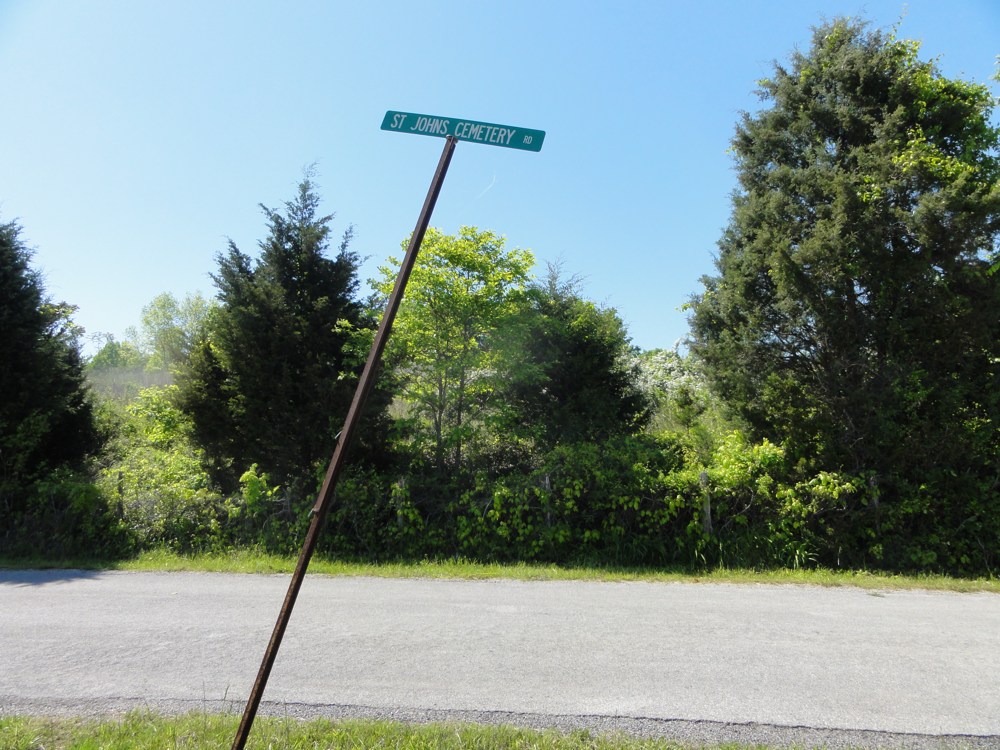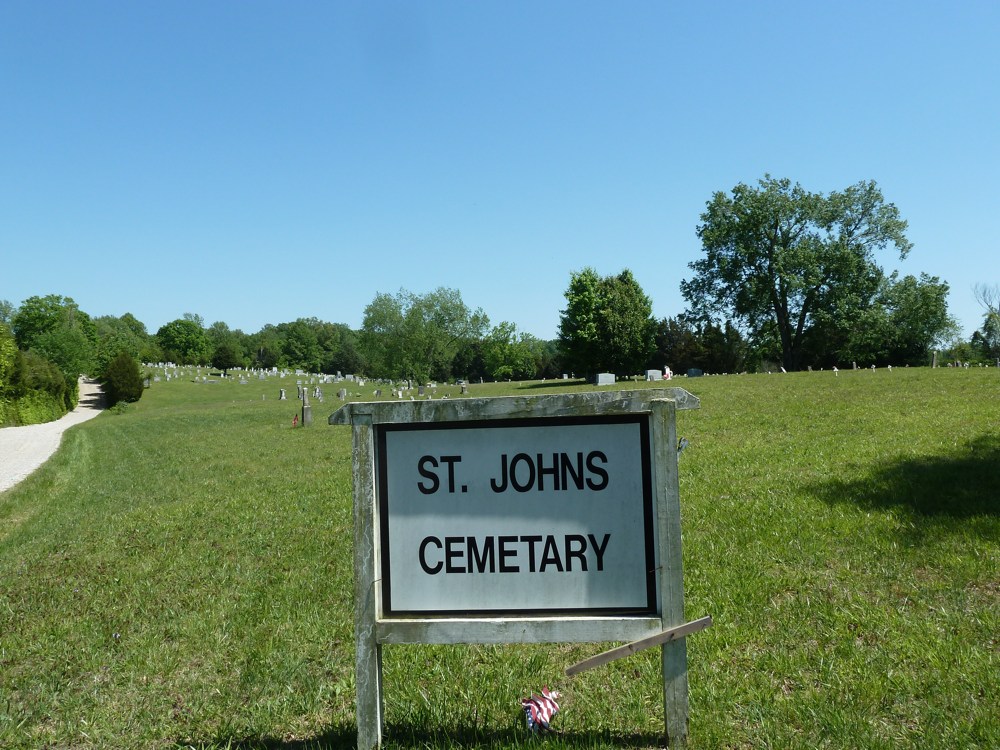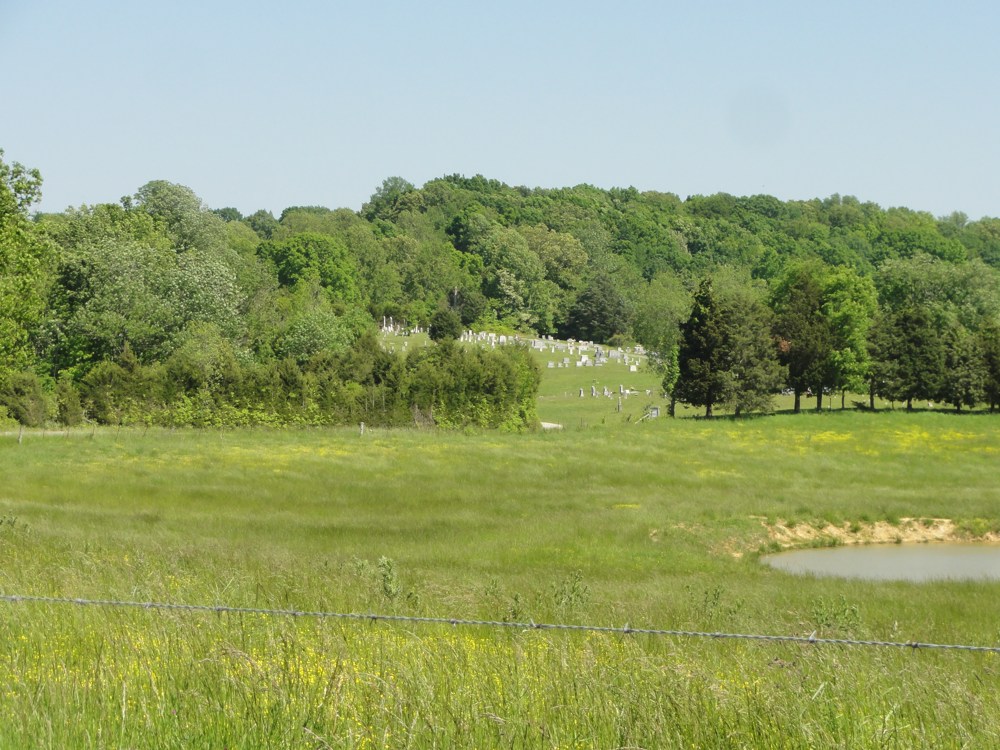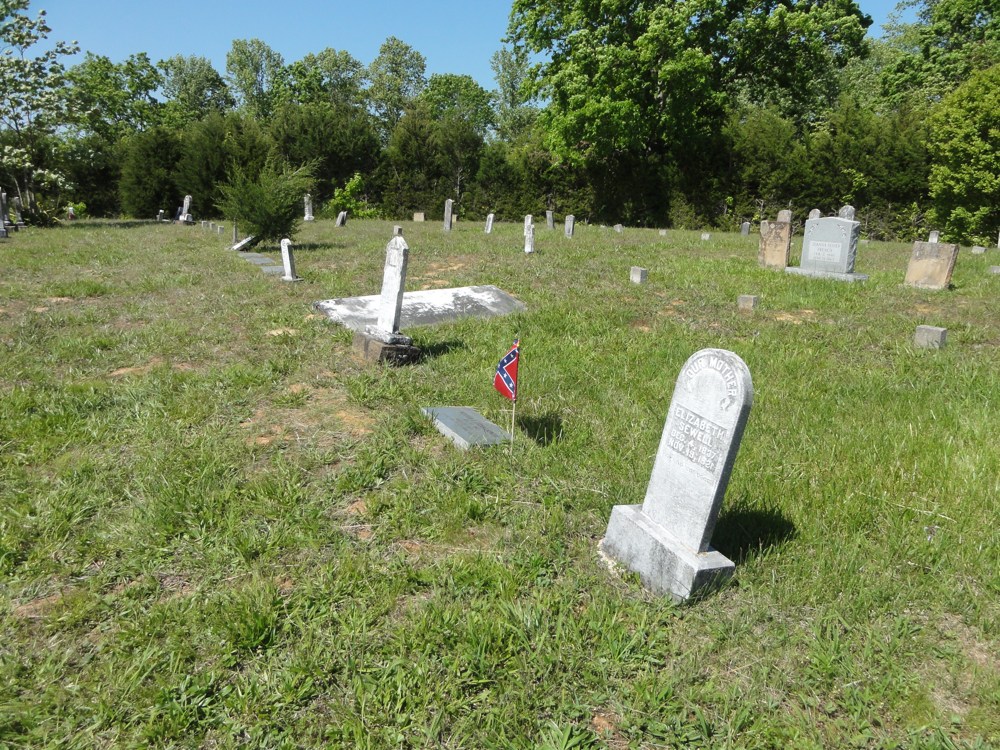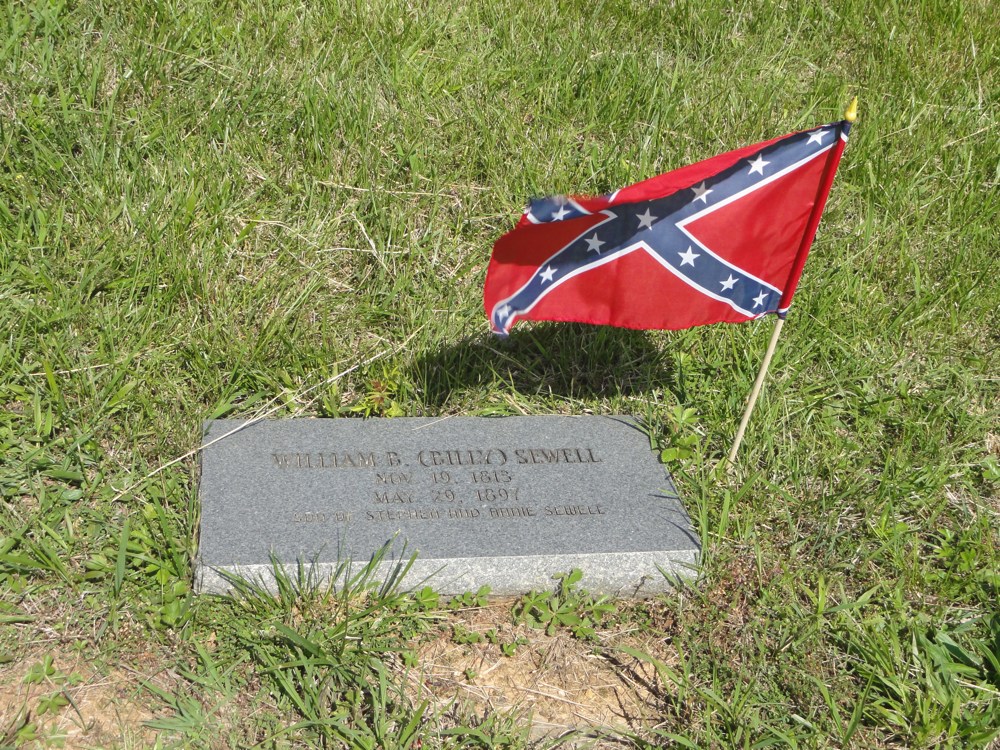The Sewell Family Story - The Beginning
An 19th & 20th Century Dynasty Of Leadership Among Churches of Christ
![]()
How It All Started
In the 19th and 20th centuries, among churches of Christ there was no name among southern churches more prominent than that of Sewell. Perhaps, the most notable brotherhood wide was Elisha G. Sewell. He was an associate of David Lipscomb and edited the Gospel Advocate for many years. However, in different sections in the south, others of this faithful family had great prominence. In south-central Tennessee, Elisha's older brother, Jesse L. Sewell was most prominent. He had two other brothers, Isaac C. and Caleb W. Sewell were preachers of prominence in northeastern Tennessee and southern Kentucky. All of Jesse L. Sewell's sons preached, Joseph in Missouri, William A. in Tennessee, and later in Texas, L.R. around Nashville, Tennessee, and Caleb preached in Falls County, Texas. William A. Sewell's son, Jesse Parker Sewell was a preacher and was president of Abilene Christian College. Many other Sewell family members either preached or married preachers and church workers for many years.
But, it all started somewhere! Jesse L. Sewell was from a prominent Baptist family in Clay County, northeastern Tennessee. His brother William B. "Billy" Sewell married a member of the church of Christ. Her name was Sarah I. Turner. She taught her husband the simple message of the gospel to which he obeyed. The story that appears in the biography on the life of Jesse L. Sewell written by David Lipscomb expressed the beginning of great changes in the family, and many many blessings for the Kingdom of Christ.
"An older brother, W. B. Sewell, in the year 1840, married a member of the church of Christ. This threw him with the disciples, carried him to their meetings and caused him to hear their preaching. He was attracted by their plea to lay aside all opinions and inventions of men as having no place in the service of God, and to adopt the word of God, as the only and sufficient rule of faith. The simplicity of the Lord's day worship and their study of, and readiness to follow the word of God, commended them to his better judgment and he partook of the Lord's supper with these people. This gave great umbrage to his Baptist brethren, and they speedily arraigned him before the Wolf River church, of which he was clerk, and his father and almost the whole Sewell family were members. On the day of trial his uncle, W. D. Sewell, was moderator. William being clerk of the church, had the Articles of Faith and Rules of Decorum; holding this in one hand and the New Testament in the other, he asked by which of the books, would they try him? insisting he must be tried by one or the other of them. While he was up, an old member, Jesse Hull, moved his exclusion, another member seconded it, and it was at once put to the vote, and the majority voted to exclude him, without a trial. Another uncle, J. A. Sewell, said to him as the vote was being put, " We will try you by a rule we have among us, that we think we got from the Bible." But no trial or rule was given except to vote him excluded.
"In the exclusion of William from the church, Jesse took no part and said nothing. But after it was over, Jesse said to William, "I think you made a mistake in communing with those people, and I think I can show you so from the Bible." William replied, " If you can show me by the Bible, I did wrong, I will gladly retract and confess my wrong." From this an earnest Bible investigation began, continued from time to time as they would meet, through several weeks, and embracing all the points of difference between the Baptists and disciples. Jesse would read and study and think he had his proof irresistible. They would meet and discuss matters, Jesse would retire feeling himself worsted. He would again prepare himself, feeling sure, now, to retire again feeling he had failed. These discussions embraced the power and sufficiency of the word of God, in converting the sinner, and guiding the Christian, and as a rule of faith for the church of God, the doctrine of total hereditary depravity and the direct operation of the Spirit. His diligent and close study of the Bible, and these discussions with his brother William, gradually brought him to see the errors of these Baptists and the simple truth, that the word of God is the seed of the kingdom, that it, believed and received into the heart, converts and changes the heart, and obeyed brings a man into Christ, perfects him as a Christian, and fits him as a child of God to dwell with his Father forever.
"The striking characteristic of Jesse Sewell at this time, was a determination to be with a true heart and a good conscience, loyal to God, and a determination to be true to his word. As he learned these truths, they showed themselves in his preaching, which excited the fears of his Baptist brethren.
"A word as to Wm. B. Sewell and his wife. They were the instruments through which the Sewell family were brought to the truth. We know nothing of her, save that through her conversation her husband was won, and many years ago, she departed to be with Christ. He was never a preacher, but he studied the Bible, talked of it to those who were near to him, and led them to see the truth. He not only was instrumental in bringing Jesse, but his younger brothers also. He lived some distance from the family, but usually visited them at the time of the monthly preaching, and would talk with them of the matter preached and test it by the word of God. Isaac says, he led him to see much of the truth by starting him to find in the Scriptures, evidence of the direct influence of the Spirit in conversion, and pointed out to him that the Epistles were all written to Christians and not to sinners. This led to the study of the proper division of the Scripture, and investigation of these subjects led him to see many scriptural truths that he had not seen before.
"The influence exerted through these two persons, in their quiet way and in the private walks of life, shows how God uses simple, unthought-of, and, as they appear to us, fortuitous circumstances to effect his ends. It teaches the lesson, that fidelity to God and man in the relations we are in, is what God requires at our hands, then he will overrule for good, and out of what seems to us small matters of life, bring the greatest results.
"He with a second wife has lived a quiet and retired life, and now aged awaits in Clay County, Tennessee, the call of the Master. For their part in bringing Jesse Sewell and his brothers to see the truth, many Christian hearts will hold them in kindly remembrance."
-Life And Sermons Of Jesse L. Sewell, by David Lipscomb, pages 57-60
![]()
The Pioneer Pulpit
THE WILLOW GROVE (TENN.) MEETING.
On the third Sunday in August I began my fifth meeting with the congregation in Willow Grove, Clay County, Tennessee. The meeting had been widely announced and consequently started off with large audiences and fine interest. People came from all the adjoining counties. Among those in attendance were brethren from Lilydale, Oakley, Livingston, Cookeville, Gainesboro, Butler's Landing, Hilham, Celina, Burkesville (Ky.), and from all the congregations in the Willow Grove section. The meeting continued over the first Sunday in September. There were sixty-three additions. Some thought that there were two thousand people at the last service of the meeting. The congregation at Willow Grove is one of the oldest in the "Upper Cumberland country." It was established by Dr. J. M.Turner, who came from Virginia to Tennessee.
Having no meetinghouse at the first, the little congregation met in the groves in summer and in the hospitable home of Squire John ("Jack") Sevier in winter. This John Sevier was the father-in-law of Dr. Turner, and a nephew of the first governor of Tennessee, Col. John Sevier. Squire Sevier was, for a long time, an elder in the congregation, and gave the ground upon which the present meetinghouse now stands. He was also the first postmaster of Willow Grove. The town derived its name from a willow tree which stood in his yard. He died in 1875. Another early leader in this church was William B. Sewell, the eldest son of Stephen and Anna Brown Sewell, and a brother of Jesse L., Isaac C., Caleb W., and Elisha G. Sewell. He served as an elder about forty years. A daughter, Mrs. N. M. Arms, who is in her eighty-eighth year, and a number of the grandchildren of William B. Sewell now worship at Willow Grove.
The "pioneer" preachers of the primitive gospel frequently visited this section of the country. Among those who labored here may be mentioned Newton Mulkey, Andrew P. Davis, Isaac T. Reneau, the Sewells, J. M. Kidwill, and James Ownsby; and, in later times, the Kirbys, F. B. Srygley, and others.
The present membership of the congregation is about three hundred and fifty. In this number are some of as faithful disciples as can be found anywhere. We mention the Arms, the Watsons, the Hills, the Watkins, the Sewells, the Smiths, the Colsons, the Seviers, Professor Carr, Professor Ledbetter (county superintendent of education), Professor Algood (principal of the local high school), and Dr. Edward Clark.
THE SEWELLS.
The name "Sewell" is inseparably connected with the history and development of this section of Tennessee. The Sewells came from the Clear River settlement of North Carolina to what was then Carter (now Johnson) County, Tennessee, near the close of the eighteenth century. Not many years later three brothers (there were seven brothers and one sister in this family, but we have data relative to only three of the brothers), William D., J. A., and Stephen Sewell, moved across the Cumberland Mountains and settled among the rugged hills <In the waters of Wolf River, only a few miles northeast of September 29, 1932 Willow Grove. They were of English descent and were Baptist.
William D. was a Baptist preacher, and served as minister of the old Mount Zion Baptist Church for more than forty years. We know little of his brother J.A., except that he voted for the exclusion of his nephew, William B. Sewell, from the Baptist Church because he had "communed with the 'Campbellites.''' Before crossing the mountains, Stephen married Annie Brown, of German descent, in Carter County. There were fourteen children born to Stephen and Annie Sewell. Twelve of these, seven sons and five daughters, lived to be grown. The other two, a son and a daughter, died in infancy and childhood.
Few families, in the last century, have contributed as much to the cause of Christ as that of Stephen and Annie Sewell. Originally Baptists, the parents were brought to the church of Christ through the influence and teaching of their eldest son, William B., who had been taught the truth by his wife, who was a member of the church of the New Testament. Before marriage she was a Miss Turner, a relative of Dr. Turner, who established the church at Willow Grove. Speaking of William B. Sewell and his wife, David Lipscomb says, in "The Life of Jesse L. Sewell": "They were the instruments through which the Sewell family were brought to the truth. We know nothing of her, save that through her conversation her husband was won, and many years ago she departed to be wIth Christ. He was never a preacher but he studied the Bible, talked of it to those who were near to him and led them to see the truth. He not only was instrumental in bringing Jesse, but his younger brothers also."
Four of the brothers of William B. Sewell became preachers of the primitive gospel. After he left the Baptist Church, his brother, Jesse L., who was at the time a member and preacher of the Baptist Church, visited him to show him the "error of his way." They carefully studied all the Scriptures, as they said, "on both sides of the question." Jesse was surprised at the ability of William and the strength or his arguments. He had not anticipated any serious difficulty in getting him back into the Baptist fold. Weeks were spent in this investigation. Finally, one day Jesse shut his Bible quickly and loudly, and exclaimed to his wife: "Bettie, all the passages are William's." He had seen the truth. He promptly accepted it. As a result, he was excluded from the Baptist Church for preaching "faith, repentance, and baptism for the remission of sins." Jesse L. Sewell labored long and he labored well in the vineyard of his Master. David Lipscomb said: "My conviction is, the hold the Christian religion has upon the people of Middle Tennessee is due under God to Jesse Sewell more than any other one man."
Isaac C. Sewell asked that his name be taken off the church list of the Baptist Church at the time Jesse L. was excluded from fellowship. He rendered great service to the church, being a good song leader, an efficient school-teacher, and an acceptable preacher. He did not travel and preach so extensively as his brothers. He was never married. There is an old moss-covered slab in the Sewell graveyard, near the old homestead, which bears this inscription: "Isaac C. Sewell, born June 6, 1822; died March 29, 1900. 'There is no death. That seemeth transition.'''
Caleb W. Sewell was baptized in his twentieth year by his brother Jesse, in October, 1847. He studied grammar under Isaac T. Renau at Salt Lick Bend in Kentucky, and later attended Bethany College. It seems that he was, while there, a favorite of the Campbells, especially of Mrs. A. Campbell, who gave him a silk cap for his mother, Mrs. Stephen Sewell. The gift was cherished so highly that it Was never worn. And when "Mother Sewell" died, she was buried in this cap. Caleb labored for a number of years in Louisville, Ky.; but after the death of his wife, July 11, 1894, and on account of failing health, he returned to the old Sewell home, where he died on September 8, 1911. He was buried beside his brothers, William and Isaac, in the family graveyard.
The youngest of the "four preaching boys," as they were affectionately called by their old friends, the lamented Elisha G. Sewell, was one of the editors of this paper for more than a half century. His life is known and his influence is felt to the far ends of the earth. Our readers are so familiar with the work of this saintly veteran of the cross that further mention here is unnecessary.
Thus the loyalty of one faithful Christian, the wife of William B. Sewell, gave to the church Stephen and Annie Sewell, their four preacher sons, and a host of descendants worthy of the name.
-B.C. Goodpasture, Gospel Advocate, The Willow Grove (Tenn.) Meeting, Sept. 29, 1932, p. 1059, 1067.
-Thanks to Tom L. Childers for making this article available on Facebook in May, 2013.
![]()
Directions To The Graves of The Sewell Family
St. Johns Cemetery lies in the very rural region of northeast Clay County, Tennessee. From I-40 in Cookeville, Tennessee take exit 288 and head north on Hwy. 111, 70s for 29 miles. Continue north of Livingston on Hwy. 111. A few miles north of town turn left on Hwy. 294. Go 14.3 miles and turn right on Lily Dale Road. Very shortly you will need to turn right again and head over to the old St. Johns Cemetery. The Sewell plot is at the rear of the cemetery in the oldest section. These region was originally filled with Sewells, many of whom are buried here.
GPS Location
36.592447,-85.303677
View Larger Map
![]()
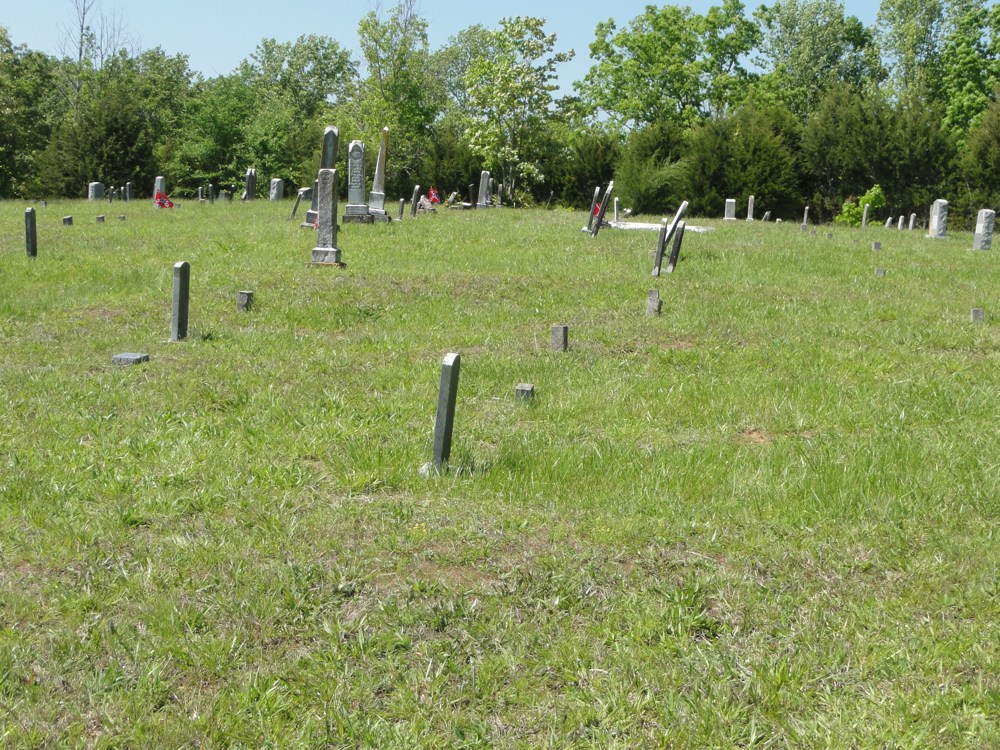
Rear portion of St. Johns Cemetery, Clay County, Tennessee
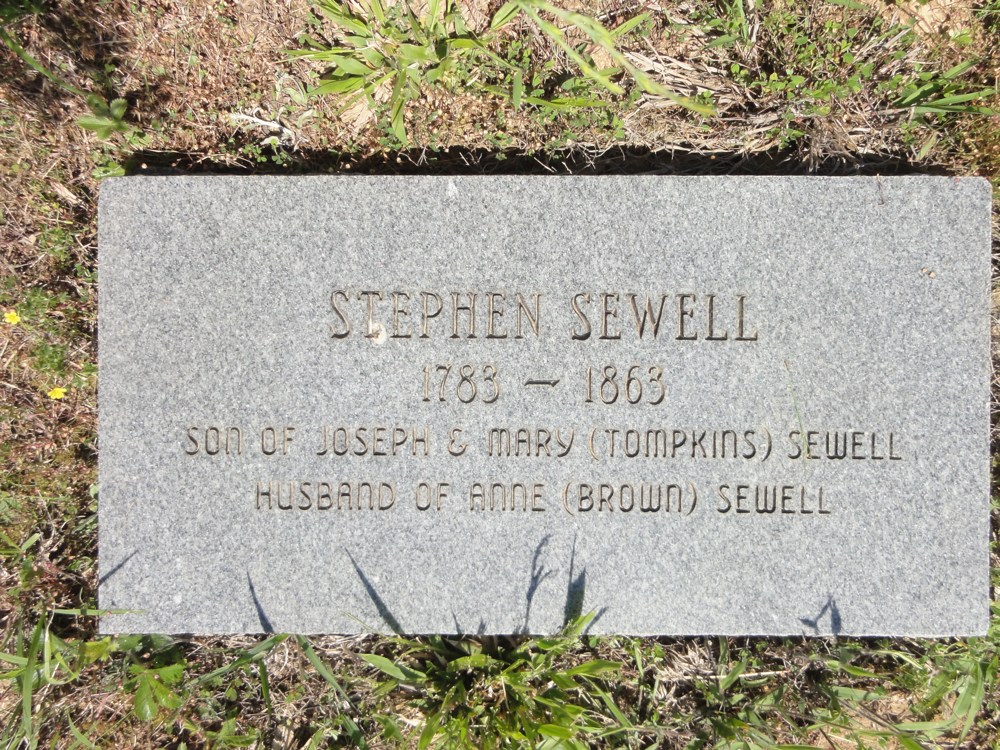
Stephen Sewell
1783-1863
Sone of Joseph & Mary (Tompkins) Sewell
Husband of Anne (Brown) Sewell
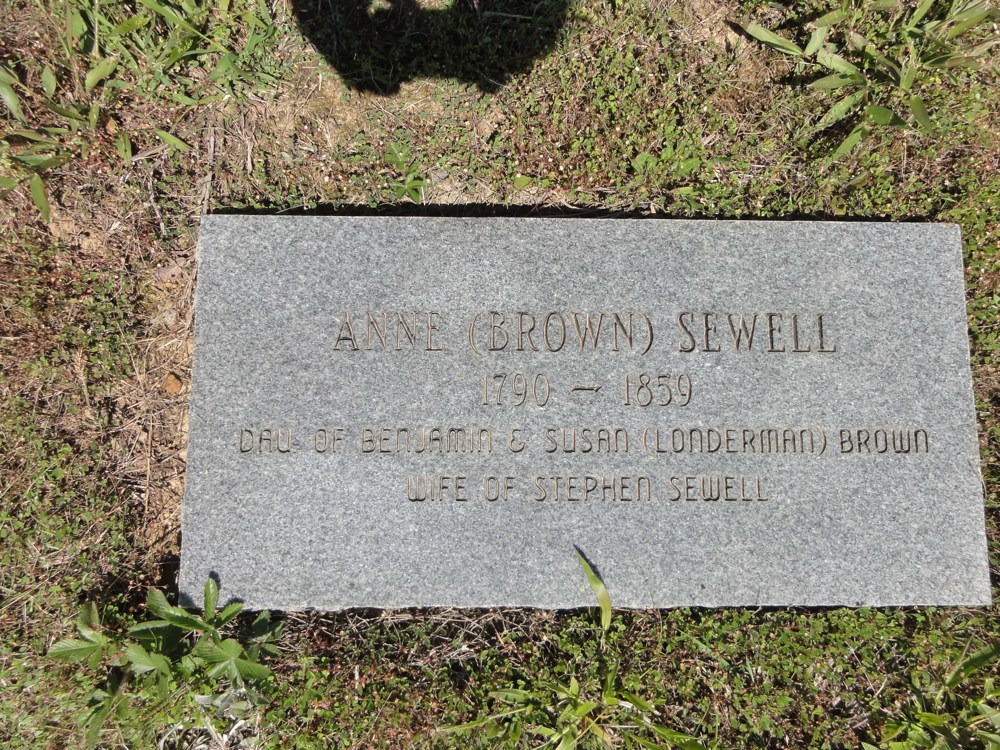
Anne (Brown) Sewell
1790-1859
Daughter of Benjamin & Susan (Londerman) Brown
Wife of Stephen Sewell
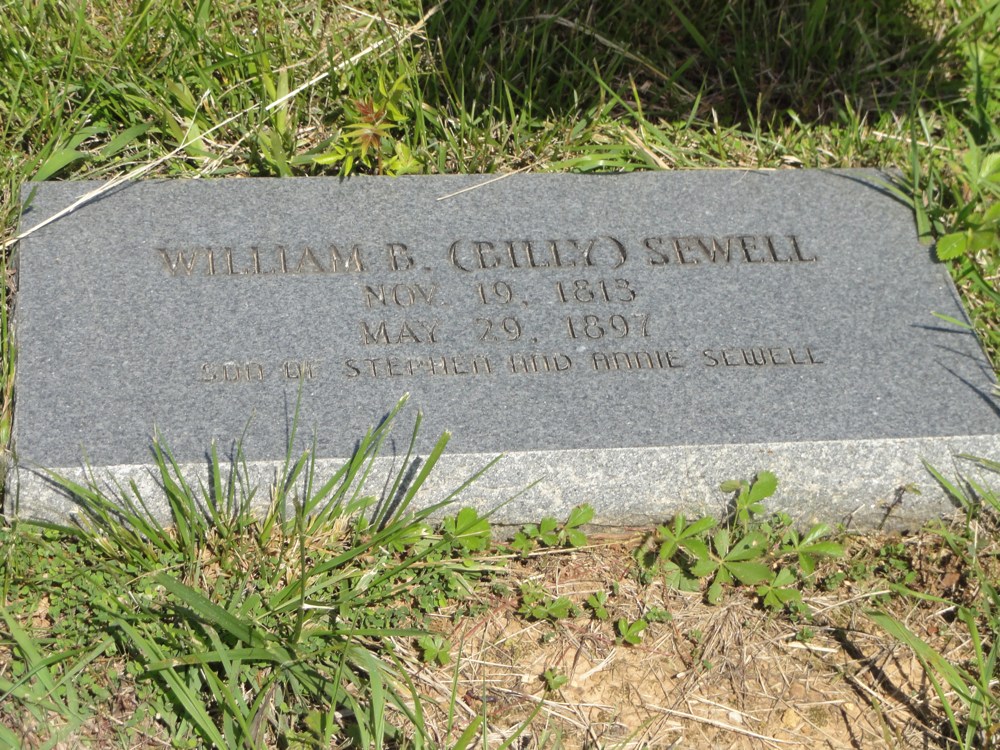
William B. (Billy) Sewell
November 19, 1813
May 29, 1897
Son Of Stephen And Annie Sewell
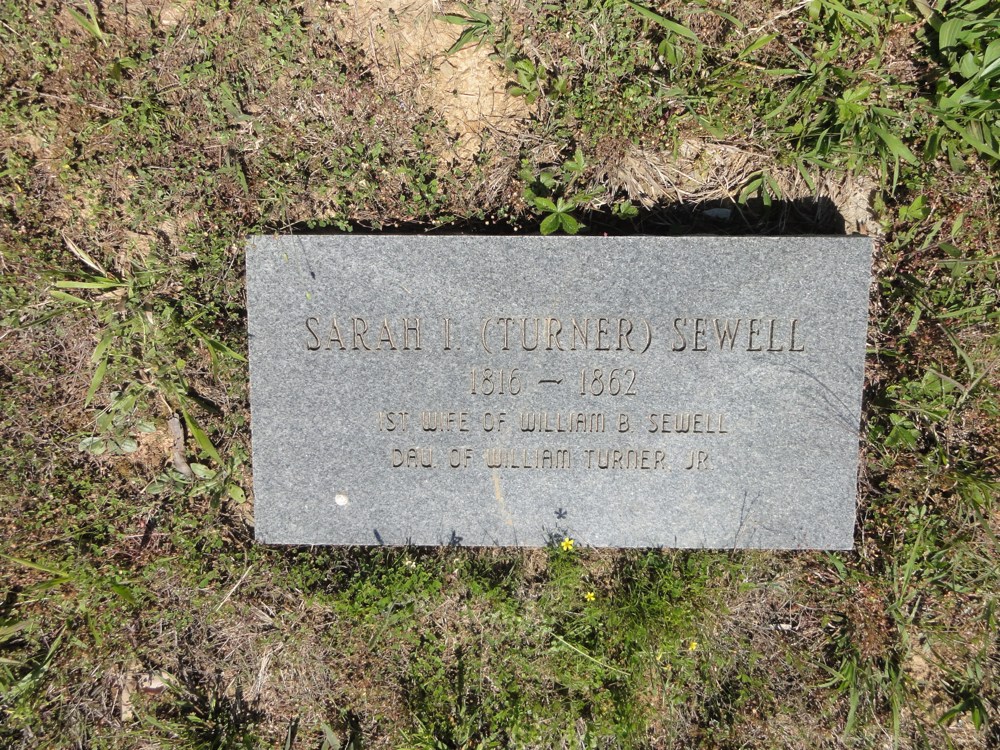
Sarah I. (Turner) Sewell
1816-1862
1st Wife Of William B. Sewell
Daughter of William Turner, Jr.
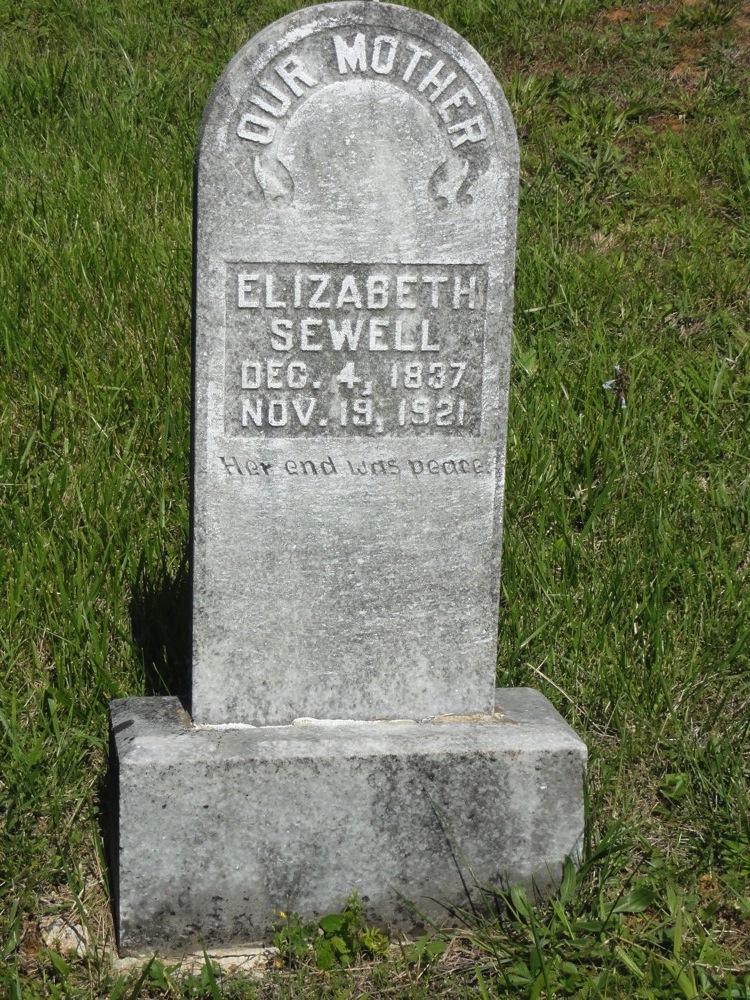
Elizabeth Sewell
December 4, 1837
November 19, 1921
Her end was peace.
Second wife of William B. Sewell
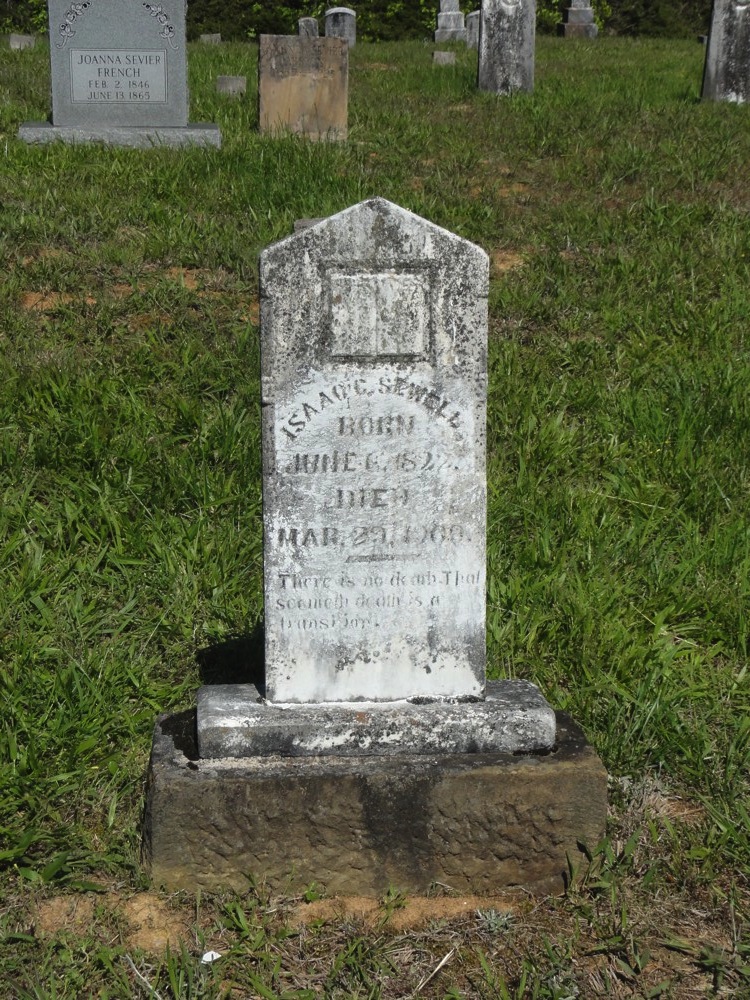
Isaac C. Sewell
Born
June 6, 1822
Died
March 29, 1900
There is no death. That
seemeth death is a
transition.

Caleb Wit Sewell
Born June 30, 1828
Died September 8, 1911
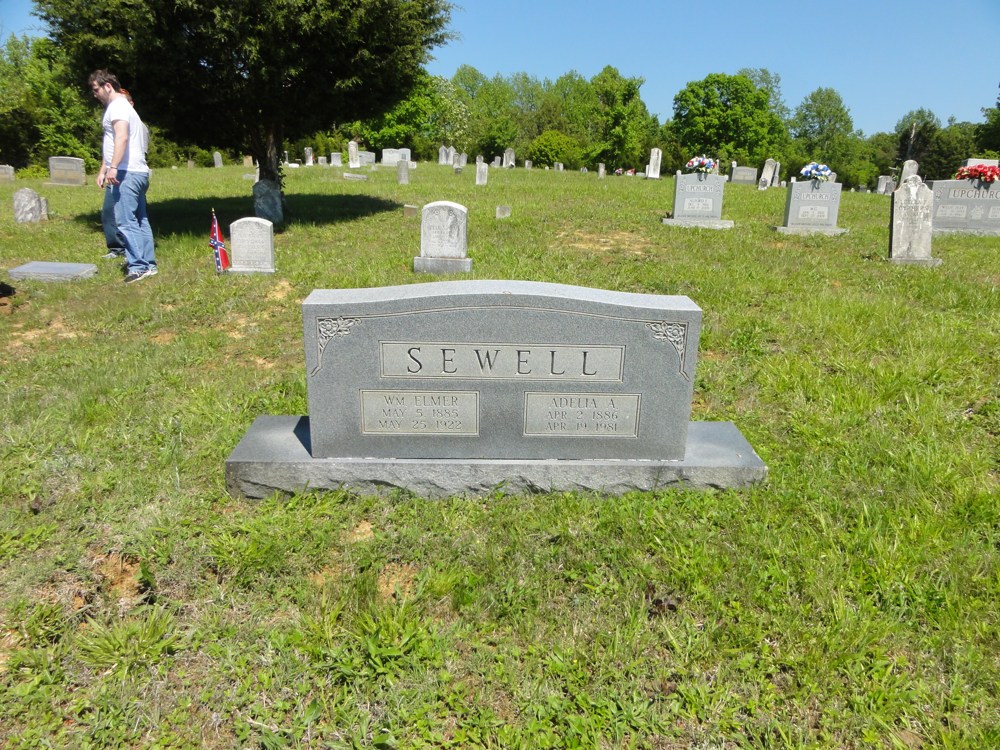
Sewell
Wm. Elmer May 5, 1885 - May 25, 1922
Adelia A. April 2, 1886 - April 19, 1981
![]()
The Other Sewell Brothers
![]()
Photos Taken 05.14, 2013
Page produced 09.21.2013
Courtesy of Scott Harp
www.TheRestorationMovement.com
![]()

